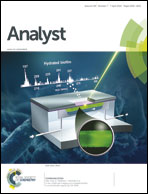Qualitative and quantitative differentiation of gases using ZnO thin film gas sensors and pattern recognition analysis
Abstract
In the present work we have grown highly textured, ultra-thin, nano-crystalline zinc oxide thin films using a metal organic chemical vapor deposition technique and addressed their selectivity towards hydrogen, carbon dioxide and methane gas sensing. Structural and microstructural characteristics of the synthesized films were investigated utilizing X-ray diffraction and electron microscopy techniques respectively. Using a dynamic flow gas sensing measurement set up, the sensing characteristics of these films were investigated as a function of gas concentration (10–1660 ppm) and operating temperature (250–380 °C). ZnO thin film sensing elements were found to be sensitive to all of these gases. Thus at a sensor operating temperature of ∼300 °C, the response% of the ZnO thin films were ∼68, 59, and 52% for hydrogen, carbon monoxide and methane gases respectively. The data matrices extracted from first Fourier transform analyses (FFT) of the conductance transients were used as input parameters in a linear unsupervised principal component analysis (PCA) pattern recognition technique. We have demonstrated that FFT combined with PCA is an excellent tool for the differentiation of these reducing gases.


 Please wait while we load your content...
Please wait while we load your content...